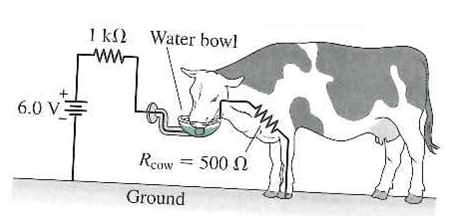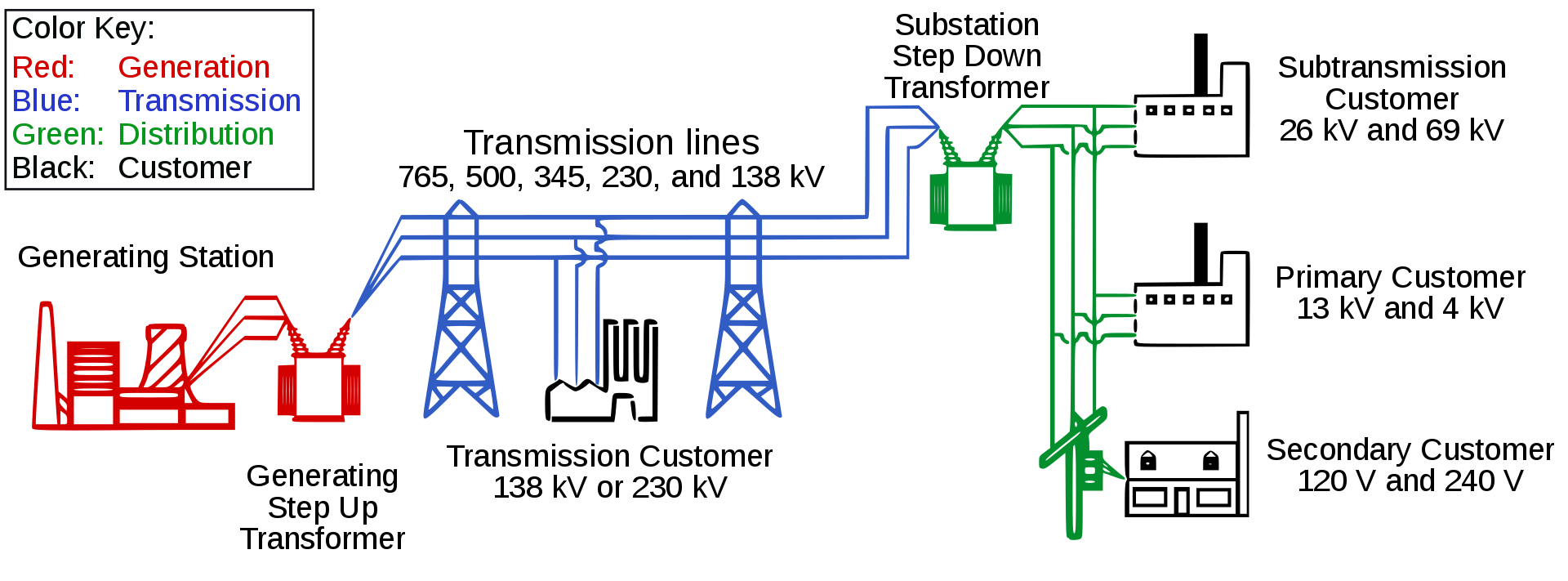By guest contributor Nicole Welk-Joerger
In September 2016, Sadie Frericks, a Minnesota dairy farmer, recounted a moment in Hoard’s Dairyman when she and her husband noticed their heifers were trying to tell them something. She noted that the heifers “wouldn’t stop bellowing,” and by process of elimination the couple decided to tackle their animals’ automatic waterer. In the process of cleaning the tub full of water, Sadie’s husband, Glen, felt a small jolt run up his arm.
If electrical currents traveled through the water into Glen’s arm, they likely bothered the muzzles of their heifers. The Frericks consulted an electrician and a nutritionist to resolve the problem. A storm caused an electrical surge through the farm’s electric fence and connecting outlets, resulting in stray voltage: currents generated by sources producing 10 volts of electricity or less. The heifers felt this phenomenon through their water trough nearby.

An illustrated example of an automatic livestock waterer, possibly similar to the system that was susceptible to stray voltage in the case above. From Tru-Test Livestock Company.
Seamless resolutions to stray voltage, like this one, are uncommon. It can take days, sometimes weeks, for farmers to realize their animals are experiencing subtle electrical shocks when drinking from their troughs, grazing on pasture, or walking into the milking parlor. When stray voltage goes unresolved, some cows can become more hesitant to eat and drink. They can also prove difficult to move through barns for their daily milkings.
Some studies suggest most cows can adapt to these shocks if they come to expect them. However, scientists continue to investigate stray voltage and its complexities. It has been a topic of study in agricultural science since at least the 1960s. Physics textbooks from over the years even include cases of stray voltage with problem sets based on these electrical currents. Equations are often illustrated with pictures of cows lapping at water bowls. To further emphasize the significance of this phenomenon, farmers have filed court cases against electrical companies for unresolved stray voltage, claiming damages for their sick animals.
[youtube https://www.youtube.com/watch?v=1iFlKYlLxKI&w=697&h=392]
An advertisement for the Agrivolt ground fault detector, which may help detect stray voltage.
In these different instances, as they bellow, dance about, cautiously approach their troughs, or get sick outright, cows force us to acknowledge the anthropocentric history of our larger electrical systems.

A stray voltage image accompanying a problem set from Essential University Physics (Second Edition, 2011).
Experts designed power grids with humans in mind. The grid is the interconnected network of power that delivers electricity from generators to consumers. As engineers tinkered with this system in the nineteenth and twentieth centuries, high voltage interactions were just one of a myriad of new concerns. One solution to high voltage surges included grounding systems, which helped distribute electrical currents away from points of transmission. Grounding electricity helps limit electrical build-ups from static electricity, and it redirects power from lightning strikes into the soil.

A diagram of the electric power system. From Wikimedia Commons.
At its inception, human safety was paramount with grounding, among other designs. These developments not only kept electrical producers and their workers safer, but also enabled us as everyday consumers to continue to interact within an electrified landscape with little realization of the currents above our heads and beneath our feet.
Non-humans disrupt the convenient invisibility of electricity. As they interact with our human-built environment in often unexpected ways, they reveal the very material decisions made by scientists and engineers in the past that still affect us today. Historian Etienne Benson illustrates this clearly with an early 20th century case from the Southern California Edison Company. As the company sought to remedy “flashovers,” which caused voltage drops and risked power outages, investigations in the 1920s revealed that the excrement from birds that perched on transmission towers caused these problems. In his article, “Generating Infrastructural Invisibility,” Benson explains that mechanisms like insulation and interconnection render unavoidable interactions between our human-built infrastructures and the natural environment invisible to the everyday consumer. And they remain invisible, unless you know where to look. Today, the history of this exchange between power companies and bird excrement manifests in spikes and plastic “tents.” These implements are meant to discourage birds from perching on transmission towers and power lines for both their sake and the sake of convenient power.
Cows are much more sensitive than humans to the electrical currents we have built into our environment; so much so that on farms that do not actively use the grid, cows can still feel the effects of stray voltage from surrounding grounded systems.

A metal water trough design on a farm in New York from an April 2018 field visit. Photograph by author.
Some of the dairy farmers I have visited and worked with in my research, for example, actively try to avoid electricity. Amish farms across Pennsylvania, Maryland, and Ohio run at night on battery-powered flashlights and kerosene lanterns. On hot days, gasoline-powered engines run fans to cool barns. Instead of using mixing machines and automated carts,many Amish farmers shovel feed to their cows by hand. Amish interactions with the grid remain minimal to best enact the separation between Amish life and modern, worldly life. By extension, Amish-owned cows live in off-grid conditions, or so it seems. When symptoms of stray voltage manifest in Amish cows, it is a reminder that it is difficult, if not impossible, to separate from electrified landscapes – regardless of one’s intentions.
Historical processes of generalization and standardization have naturalized our electrified world in the United States. However, it is worth remembering that not all humans interact with electricity in the same way, and neither do non-humans. In ethnographic and historical searches for those “frictions,” as Anna Tsing so aptly calls them, we can see where national and global projects like electrification challenge assumptions of scalability and our attempts to apply seemingly positive technoscientific interventions across different communities. Stray voltage is one such case I have encountered in my own ethnographic work with the Amish, and has inspired me to look into longer technological processes. The invisible, often rendered “mundane,” electric grid becomes more complicated through these moments of friction, forcing us to confront historical decisions that continue to impact present-day relationships between humans and non-humans.



